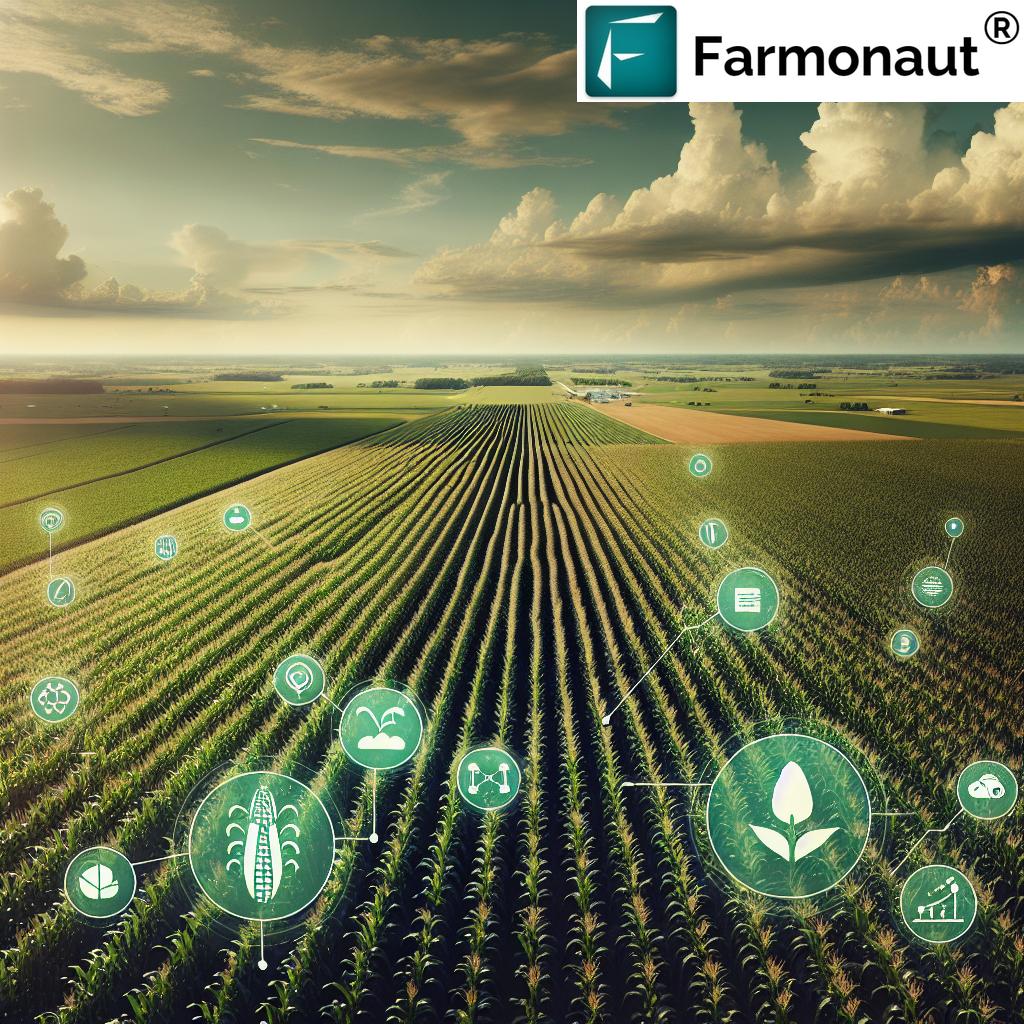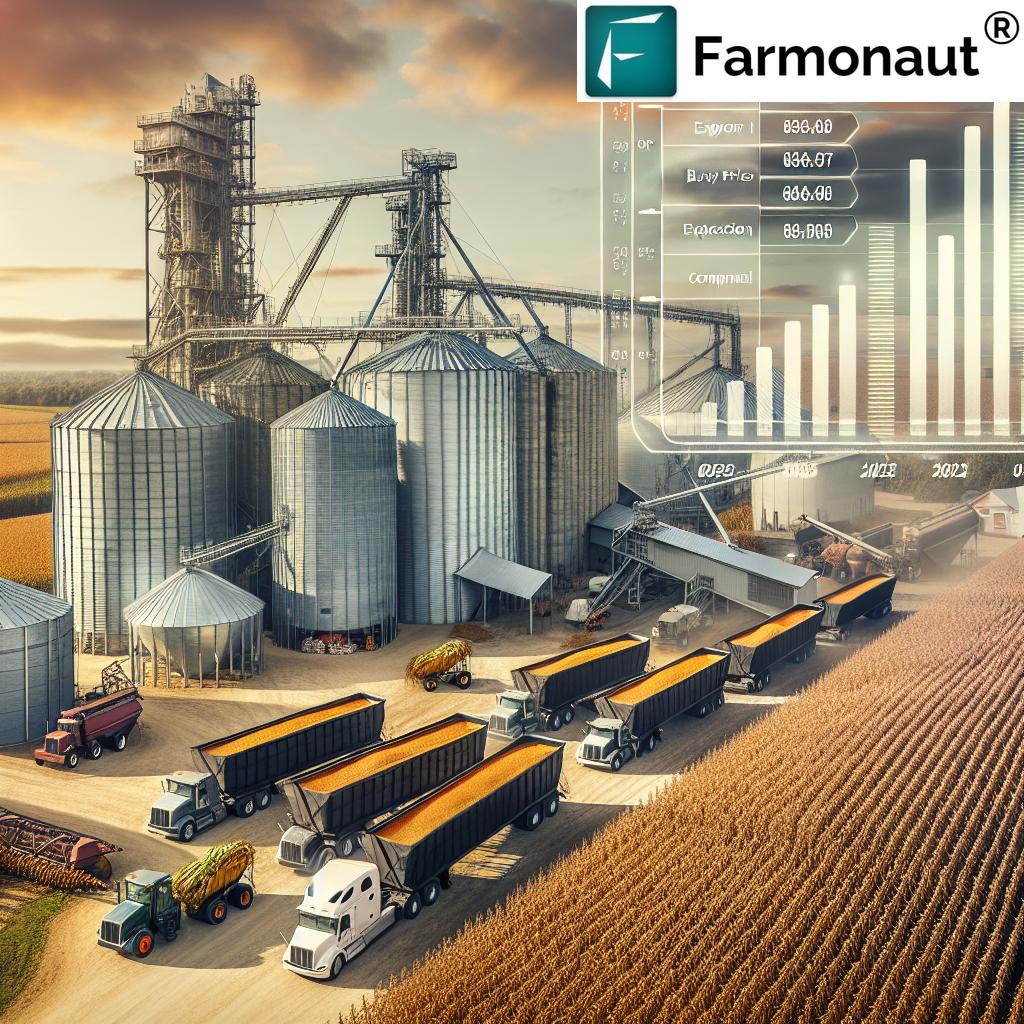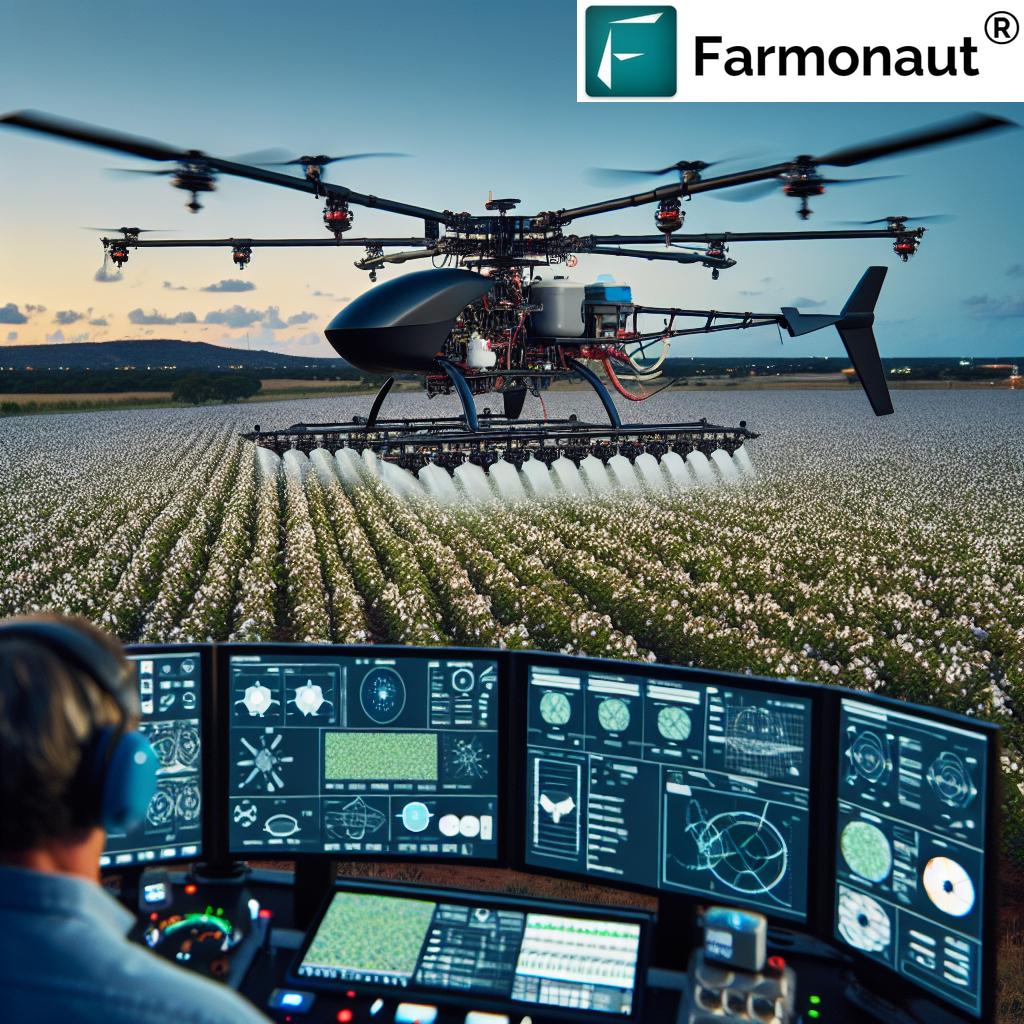Corn Forecast 2025: Shocking U.S. Yield Predictions!
“U.S. corn yield in 2025 is forecasted to reach 181.5 bushels per acre, a record high!”
Understanding the 2025-2026 U.S. Corn Forecast: Summary & Key Trends
As we approach the crucial 2025-2026 corn season in the United States, stakeholders throughout agriculture and forestry are watching the U.S. corn production forecast with intense interest. Corn, the nation’s staple crop, shapes our sectors from livestock feed to biofuel and ethanol production. The upcoming season holds particular significance, marked by record-setting yield projections, shifting acreage, and an ever-larger role for technology and climate adaptation across the agricultural landscape.
In this comprehensive review, we unpack the latest USDA corn production estimates, including corn yield projections 2025, explore market outlook 2025-2026, analyze the impact of climate change on corn yields, scrutinize corn acreage expansion United States, and detail how innovations and sustainable agricultural practices are shaping the future. With accessible data, expert insights, and clear examples, we’ll enable you to make informed decisions on planting, resource allocation, and more.
USDA Corn Production Forecast: Acreage, Yield, Market Outlook
Current USDA Projections & Acreage Trends
The U.S. Department of Agriculture (USDA) has released its preliminary forecasts for the 2025-2026 U.S. corn production forecast, and the numbers are both impressive and consequential. Let’s break down the headline findings shaping planting decisions and resource allocation across our agricultural sectors:
- Combined Planted Acreage: Corn, soybeans, and wheat are projected to reach a cumulative 225 million acres.
- Corn Acreage Alone: Estimated at 94 million acres—a robust 4% increase from last year (Source: Reuters).
- Factors Behind the Rise: Improved profitability considerations, higher corn prices relative to soy and wheat, and better weather-induced planting conditions.
- Yield Projections 2025: A record-setting 181.5 bushels per acre, exceeding the previous record of 179.3 bushels per acre. This is driven by advancement in seed varieties, efficient practices, and favorable weather.
Such an upswing in both acreage and anticipated yield directly informs investment, labor, agri-input, and land management strategies for everyone from large agribusinesses to smallholder farmers. It also raises questions about sustainable growth.
Breakdown: Yield, Weather, and Seed Innovation
What’s fueling these optimistic corn yield projections for 2025?
- Improved Seed Varieties: Biotechnology continues to lead with seeds selected for resilience, higher yield, and adaptability to more extreme weather and tight planting timelines.
- Enhanced Farm Practices: Precision agriculture tools, like those offered by Farmonaut, leverage satellite data and AI to optimize irrigation, fertilization, and pest management—directly boosting per-acre output.
- Favorable Weather Conditions: According to current models, 2025 is anticipated to offer an advantageous growing window for the Corn Belt, subject to ongoing monitoring.
We are thus moving toward an era where corn yields are more closely tied to both technological adoption and real-time data adaptation rather than static historic trends.
Market Dynamics, Export Trends, and Economic Implications for Corn
Corn Market Outlook 2025-2026: Supply, Demand, & Price Factors
An increase in the corn supply often translates to lower prices—but the actual corn market outlook 2025-2026 hinges on complex and interconnected market dynamics:
-
Supply Surge vs. Demand Growth:
- USDA’s rising corn production estimates could nudge market prices downward if demand lags behind supply.
- Yet, domestic consumption remains high—in livestock feed production, human food, as well as corn for biofuel and ethanol production.
-
Export Opportunities & Trade Tensions:
- Approximately 13% of annual U.S. corn output is exported, making foreign markets pivotal (Wikipedia).
- Recent trade tensions, particularly with China, have caused market volatility. However, new corn export trends and opportunities are emerging in alternate global markets.
-
Biofuel & Ethanol Market:
- The biofuel industry is a huge driver for corn by providing a strong demand floor.
- U.S. ethanol plants now refine a major share of the crop; a single bushel generates ~2.8 gallons of ethanol and 17-18 lbs of distillers’ dried grains (valuable for livestock).
-
Price Determinants:
- Historic lows and highs: Higher yields historically pressure prices. However, uncertainty about exports and weather events can lead to price spikes.
- Input costs: The cost of seeds, fertilizer, diesel, and labor also guides planting decisions and market profitability.
As these market factors combine, both domestic and export-oriented stakeholders must remain agile in their strategies, leveraging timely analytics and adaptable technology such as Farmonaut for real-time market and weather insights.
Biofuel Revolution: Corn for Ethanol and Environmental Policy
The intersection of corn for biofuel and ethanol production and sustainable agriculture has never been more important. Current policy encourages biofuel blends in gasoline—stimulating robust corn demand that sustains both market prices and U.S. farm incomes. In doing so, it also challenges us to innovate new sustainable agricultural practices for corn, such as carbon footprint tracking solutions that measure and reduce environmental impact throughout the supply chain.
Export Trends and Emerging Global Opportunities
With corn export trends and opportunities shifting amid geopolitics and evolving dietary habits worldwide, the U.S. continues to lead as a key supplier, despite challenges from Brazil, Argentina, and increasingly Ukraine. Continuous improvement in traceability—such as Farmonaut’s blockchain-based traceability system—can enhance competitiveness in high-value export markets demanding transparency and quality assurance.
Corn Acreage Expansion: Implications for Forestry and Land Use
Corn Acreage Expansion United States: Land Use, Conservation, and Forest Impacts
The expansion of corn acreage directly correlates with changes in the United States’ agricultural and natural landscape:
- Conversion from Forested Land: To achieve a 4% increase in corn planting, marginal lands—and sometimes forested areas—may undergo transformation. This imposes biodiversity and ecosystem risks.
- Carbon Sequestration: Forests act as carbon sinks. Expanding agricultural land for corn could jeopardize our national capacity for climate change mitigation if not managed with conservation in mind.
- Sustainable Balancing: Tools like Farmonaut’s large-scale farm and plantation management solutions help land managers optimize yield while integrating sustainable land-use strategies—benefiting both productivity and local ecology.
The future will depend on investments in best management practices, conservation buffers, and real-time monitoring of land use to avoid unintended environmental consequences.
Forestry and the Biofuel Link: A Dual-Edged Sword
While biofuel policy can drive up corn planting, it also incentivizes forest retention and regrowth as carbon offsets under evolving environmental policy. Leading agribusinesses now use fleet and resource management tools to minimize their environmental impact across expanded operations.
Advancements in Corn Farming Technology & Machine Learning Yield Prediction
Precision Agriculture: Satellite, AI, and Data-Driven Decisions
The most successful corn growers in 2025 are those who treat technology as an essential partner. Here’s how advancements in corn farming technology are transforming the landscape:
-
Satellite-Based Crop Health Monitoring:
- Farmonaut’s platform leverages satellite imagery to capture NDVI, soil moisture, and crop stress levels. This empowers quick intervention and reduces input waste.
-
AI-Driven Advisory Systems:
- The Jeevn AI advisory system from Farmonaut provides real-time, personalized recommendations informed by the latest satellite data and weather patterns, giving growers a competitive edge.
-
Blockchain-Based Supply Chain Solutions:
- Track product traceability and boost consumer trust with Farmonaut’s blockchain platform.
-
API-First Integration:
- Farmonaut supports scalable innovation with public API access for seamless integration of advanced agri-data: Farmonaut Satellite & Weather API | API Developer Docs.
Machine Learning & Yield Prediction Accuracy
Recent studies showcase a breakthrough in corn yield prediction. Ensemble machine learning models now forecast corn yields with less than 8% root mean square error—meaning smarter, earlier, and more accurate estimation for growers and commodity traders (arXiv). This unlocks powerful opportunities for both operational planning and financial risk management.
Innovative Corn Varieties for Extreme Conditions
The development of shorter corn varieties is another game-changer. New hybrids are being introduced to handle increasing extreme weather risks—such as high winds, heat, and drought (AP News). These plants permit higher-density planting and more resilient yields, but attention must also turn to disease pressures and water efficiency, both of which are trackable with advanced satellite and remote sensing.
Impact of Climate Change on Corn Yields: Risks & Adaptation
Understanding the Impact of Climate Change on Corn Yields
Climate change remains the wild card in every corn forecast. What do the latest projections tell us about the impact of climate change on corn yields in the U.S.?
-
Risks:
- Warmer temperatures and less certain rainfall patterns can restrict crop development, reduce kernel fill, and increase susceptibility to pests and disease.
- The USDA notes that in certain locales, corn output could fall by up to 8% by 2026, without adaptation.
-
Adaptive Approaches:
- Drought-resistant corn varieties are being introduced and monitored, especially across southern and western zones of the Corn Belt.
- Precision weather analytics, such as those integrated in Farmonaut’s satellite system, enable smarter irrigation scheduling and early-stress detection.
- Sustainable solutions like carbon footprinting tools help track sustainability targets and adapt to new market demands for climate-smart commodities.
- Emerging scientific practices such as enhanced weathering—adding crushed basalt to fields—can increase soil carbon and potentially boost yields (arXiv).
“Climate shifts may reduce U.S. corn output by up to 8% in some regions by 2026.”
Corn, Soil Health, and Sustainability: The Road Ahead
Maintaining resilient corn yields in a changing climate depends on soil health, water management, and a shift toward sustainable agricultural practices for corn. Techniques such as reduced tillage, cover cropping, and real-time monitoring (via satellite-based solutions) are rising in adoption rates among U.S. farms.
When every input—be it fertilizer, pesticide, or irrigation—costs more in both dollars and environmental impact, our embrace of sustainable innovation is more vital than ever.
Comparative Forecast Table: U.S. Corn Yields and Market Trends (2022-2026)
| Year | Estimated Corn Yield (bushels/acre) | Total Production (million metric tons) | Market Price (per bushel, USD) | Major Climate Factors | Technology Adoption Level (% of farms) |
|---|---|---|---|---|---|
| 2022 | 173.3 | 354.0 | $6.00 | Drought in West; Moderate Heat | 55% |
| 2023 | 176.7 | 366.5 | $5.70 | Heavy Spring Rains; Milder Summer | 60% |
| 2024 | 179.3 (record) | 375.2 | $5.25 | Spotty Drought; Several Severe Storms | 68% |
| 2025 | 181.5 (projected record) | 382.0 | $4.80 | Favorable Conditions; Tech-Driven Monitoring | 75% |
| 2026 | 180.0 (estimated) | 380.0 | $5.00 | Hotter Summers; Adaptation to Irregular Rainfall | 84% |
(Data compiled from USDA projections, Reuters, and field adoption research. For detailed field-level monitoring, try Farmonaut’s precision ag app.)
How Farmonaut Empowers Corn Production with Precision Technology
To keep pace with rapid changes in corn production and stay ahead of yield- and price-related risks, the American agricultural industry is increasingly relying on platform-driven solutions. Farmonaut stands out as an affordable, advanced, and accessible option designed to support all stakeholders in the corn value chain:
- Satellite-Based Crop Health Monitoring: Near-real-time detection of vegetation health and field anomalies allows both large and small farms to maximize corn yields, optimize irrigation schedules, and cut unnecessary input costs.
- AI-Based Advisory: The Jeevn AI Advisory System synthesizes satellite imagery with up-to-date weather and crop data, providing tailored, actionable advice so growers can respond proactively to changing conditions.
- Carbon Footprinting: With growing pressure to demonstrate sustainability, growers can leverage Farmonaut’s Carbon Footprint Tracking to measure, verify, and minimize their environmental impacts—key when producing for ESG-conscious buyers and export markets.
- Fleet & Resource Management: Farmonaut’s Fleet and Resource Management tools streamline logistics, reduce operational costs, and improve the overall management of agricultural machinery—critical for large-scale corn operations.
- Blockchain-Based Traceability: Enhance product credibility and meet evolving food safety requirements with Farmonaut’s product traceability solution.
- API & Large-Scale Integration: Tech companies, ag co-ops, and research institutions benefit from public API access and developer documentation for comprehensive data integration and research.
Built for all—from independent farmers to agribusinesses to government agencies—Farmonaut democratizes advanced satellite and AI technology, driving up yields, efficiency, and resilience in the corn sector.
Corn Policy Considerations & the Future Landscape in the United States
The future of U.S. corn production doesn’t depend only on weather and markets. Government policies at both the federal and state levels have consistently steered planting, acreage choices, and investment:
- Subsidies & Insurance: The Federal Agriculture Improvement and Reform Act (FAIR Act) of 1996 gave more flexibility in planting, accelerating corn acreage expansion and supporting insurance growth. Today, technology-driven solutions for crop loan and insurance validation reduce both risk and fraud for all parties.
- Environmental Regulations: Sustainability mandates around soil retention, fertilizer use, and water management are shaping farming practices, rewarding those who monitor, prove, and improve their environmental footprint.
- Biofuel & Renewable Fuels Policy: Renewable Fuel Standards (RFS) and associated tax incentives for biofuel production continue to provide the backbone for much of U.S. corn demand. This is likely to continue, especially as the world seeks new ways to replace fossil energy sources.
- International Trade Agreements: Ongoing negotiations with major purchasing countries (especially China, Mexico, and Japan) will remain crucial for market access and price stability.
As the corn production landscape gets more complex, those positioned with adaptable tech, up-to-date policy awareness, and robust sustainability credentials will thrive.
Frequently Asked Questions (FAQ) on U.S. Corn Forecast 2025-2026
Q1: What is the projected U.S. corn yield per acre for 2025?
A: The USDA forecasts a record yield of 181.5 bushels per acre for the 2025 corn season—surpassing all previous records.
Q2: Will corn acreage expand further, and what will this mean for forestry?
A: Yes, corn acreage is expected to grow by roughly 4% to 94 million acres, which may result in some conversion of marginal and even forested land. It is essential to balance corn expansion with conservation to protect biodiversity and ecosystem services.
Q3: How does the 2025-2026 U.S. corn production forecast affect market prices?
A: Higher yields may pressure prices downward, but robust biofuel demand and global export opportunities (especially if trade tensions ease) can help support prices.
Q4: What major risks does climate change pose to U.S. corn yields?
A: Increasing temperatures, more frequent droughts, and erratic rainfall patterns could reduce yields—potentially by up to 8% in the hardest-hit regions by 2026 if adaptation measures are not widely implemented.
Q5: What are the main technological advancements shaping corn farming?
A: The main advancements include remote sensing and satellite-based crop monitoring, AI-powered advisory services, blockchain-based traceability, and adoption of drought- and wind-resistant corn hybrids. Platforms like Farmonaut democratize these for all types of farms.
Conclusion: Navigating the Corn Landscape Ahead
The 2025-2026 U.S. corn forecast reveals a sector adapting to new realities—higher yields, more sophisticated market and policy landscapes, mounting environmental challenges, and relentless technological progress. As stakeholders in agriculture and forestry, it is our collective responsibility to apply all available tools and insights—satellite data, AI, sustainable practices, and real-time analytics—to ensure that this next chapter is a story of growth, resilience, and environmental stewardship.
Whether you are a major agribusiness, smallholder farmer, policy shaper, or researcher, precision ag platforms like Farmonaut can help bring actionable intelligence to every acre. Stay tuned to this space for updates on corn yield projections 2025, corn market outlook 2025-2026, and the evolving role of technology in shaping a sustainable future for American corn.
Farmonaut Subscription Plans
Start optimizing your corn crops with Farmonaut’s affordable and advanced subscription plans. Monitor, manage, and secure higher yields with real-time satellite insights, AI recommendations, and blockchain powered traceability.
















